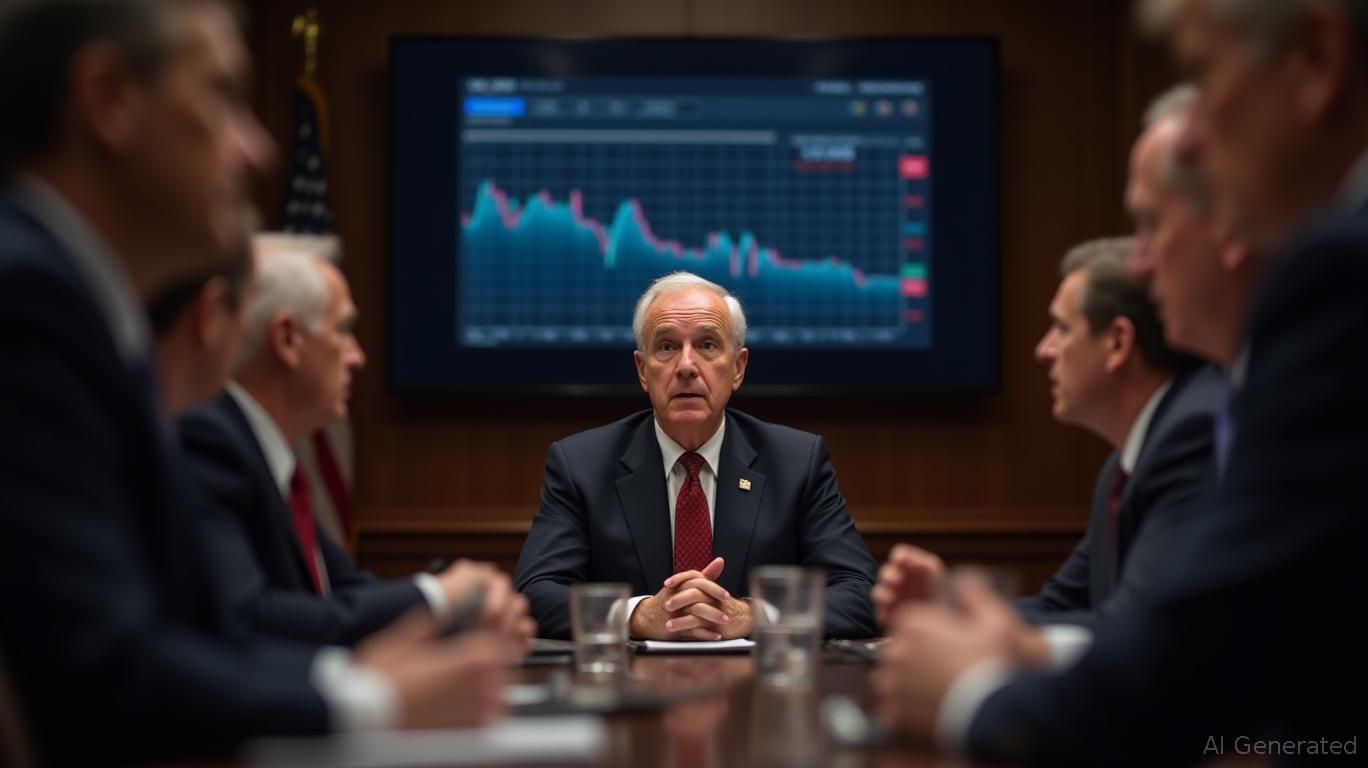Fed's Decision on December Rate Remains Uncertain Amid Lack of Official Employment Figures
- Federal Reserve plans a 25-basis-point rate cut in October, reducing the target range to 3.75%-4.00% amid soft inflation data and delayed official labor market reports. - President Trump pressures Fed Chair Powell to accelerate cuts, vowing to block future hikes and predicting 4% GDP growth in Q1 2026 despite new tariffs. - Crypto markets surge with $931M Bitcoin inflows as traders bet on Fed dovishness, while the U.S. dollar weakens, boosting risk assets like GBP/USD. - December rate decisions remain un
The Federal Reserve is widely expected to lower interest rates by 25 basis points at its October meeting, with traders assigning a 97.6% chance to this outcome. This would shift the target range from the current 4.00%-4.25% down to 3.75%-4.00%, according to

President Trump has ramped up his criticism of the Fed, accusing Chair Jerome Powell of moving too slowly on rate reductions and pledging to prevent any future increases. At the APEC summit, Trump remarked, "We will not let the Fed raise interest rates because they are worried about inflation three years from now," a statement that sparked market volatility, according to
At the same time, the crypto market has rallied in response to expectations of a more accommodative Fed.
The Fed's October decision will also put its reliance on economic data to the test amid the ongoing shutdown. With major employment figures postponed, the central bank must depend on private data, which currently points to a fragile labor market. Stephen Kates from Bankrate argued that the latest soft CPI reading—a 3% annual core rate—"should instill more confidence" for further rate cuts, a view echoed in the Yahoo market preview. However, DWS economist Christian Scherrmann cautioned that the lack of official data could make the December meeting "more unpredictable," as policymakers are "data-dependent, but this time without the data," according to
The press conference following the meeting will be closely watched, with Powell expected to highlight "risks to employment" and "persistent inflation," as referenced in the Barron's preview. Wells Fargo analysts believe the Fed could end QT in December, though some foresee an earlier conclusion in October, as mentioned in the Bond Buyer piece. For now, markets are factoring in a total of one percentage point in rate cuts by mid-2026, with Bitcoin and other cryptocurrencies likely to remain highly responsive to policy developments, as discussed in the UnchainedCrypto report.
Disclaimer: The content of this article solely reflects the author's opinion and does not represent the platform in any capacity. This article is not intended to serve as a reference for making investment decisions.
You may also like
Bitcoin price shifts as miners, Asian whales keep selling as institutions quietly buy BTC

Pi Price Prediction: PI Faces Selling Pressure as Price Weakens & Unlocks Loom
MSCI index exclusion puts crypto treasury companies at risk of forced selling
